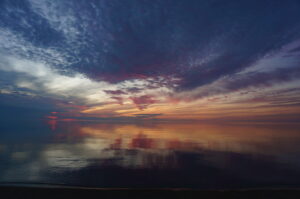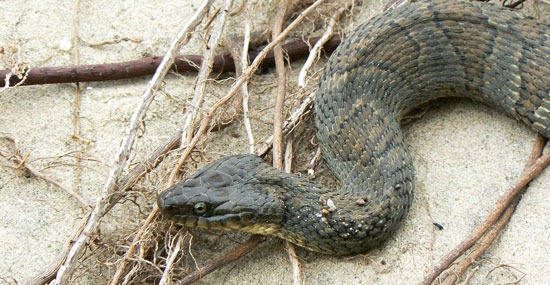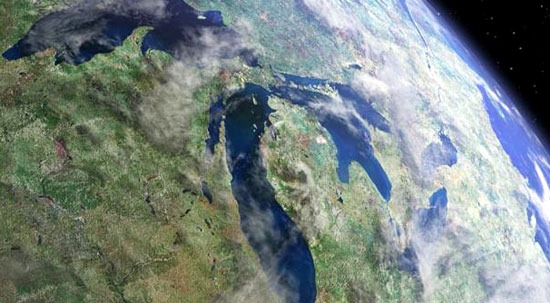Research Brief: Drivers of Winter Stratification in Lake Superior
1Winter stratification and lake thermal dynamics set up conditions in the spring and summer, as well as being heavily influenced by fall conditions. In a dimictic lake like Lake Superior, how and when winter stratification and lake cooling begin to form is still largely unknown.
A 2024 study published in Limnology and Oceanography examined 15 years of temperature data on Lake Superior to evaluate drivers of winter stratification. In order to do this, the relative roles of wind mixing and buoyancy flux (the potential for surface waters to mix or stratify vertically) once the water column cools were compared.1
Methods
The data used was pulled from various long-term observational projects focused on monitoring paleoproxies, the role of ice, internal waves, springtime convection, and others using data buoys.1 The buoys were equipped with a data logger and thermistors.
Meteorological data was pulled from a coastal weather station year-round, including in the winter when the buoys are removed to protect the equipment.
Results
The fall transition is characterized by a wind-driven collapse of summer stratification, followed by a surface cooling-driven period wherein the water column is essentially isothermal, and the eventual onset of inverse (cold upper layer) stratification. The rest of the season shows relatively fixed sub-thermocline water temperatures.
Leading into winter stratification, water near the temperature of maximum density does not expand or contract easily, preventing the formation of stable layers of stratification early in the winter as the lake begins cooling. This implies that deepwater temperatures are locked in as a result of specific meteorological conditions, in this case, air temperature and wind speed, and not lake temperature alone.
Overall, the study concludes that winter meteorological conditions play a key part in establishing winter stratification, and future research should focus more on monitoring over-lake weather data to correlate thermocline changes with specific climate parameters.
Resource
- Austin, J. (2024). What controls the onset of winter stratification in a deep, dimictic lake? Limnology and Oceanography, 69(12), 2791-2800. https://doi.org/10.1002/lno.12704















[…] conditions shape ecosystems, playing a critical role in thermal structure and dynamics and other lake processes. In large lake environments like the Great Lakes, large waves and surges […]